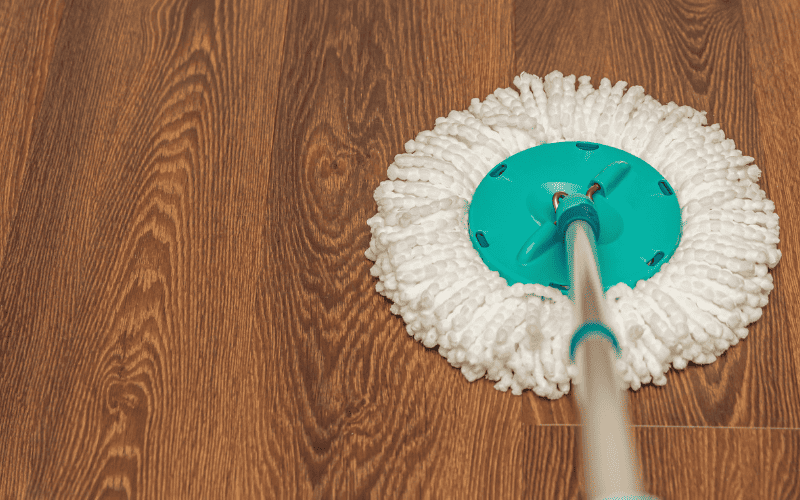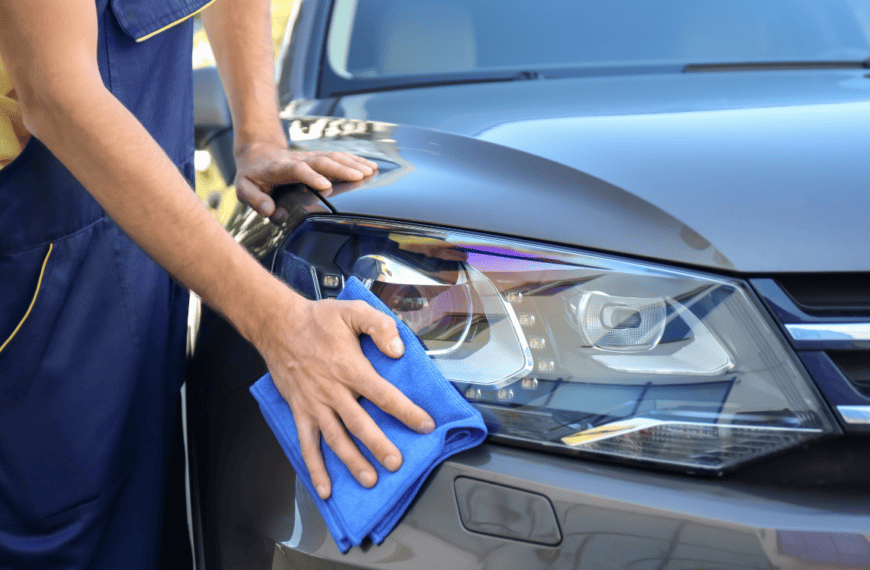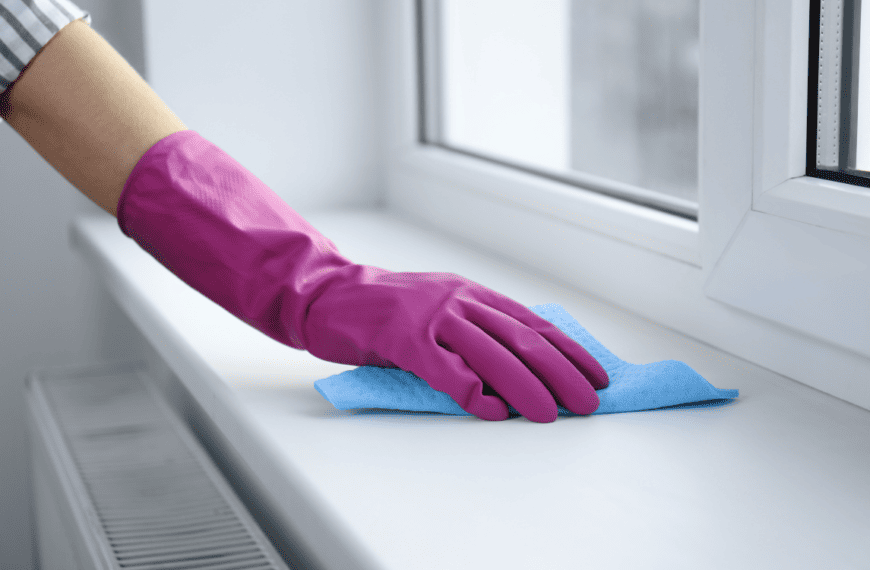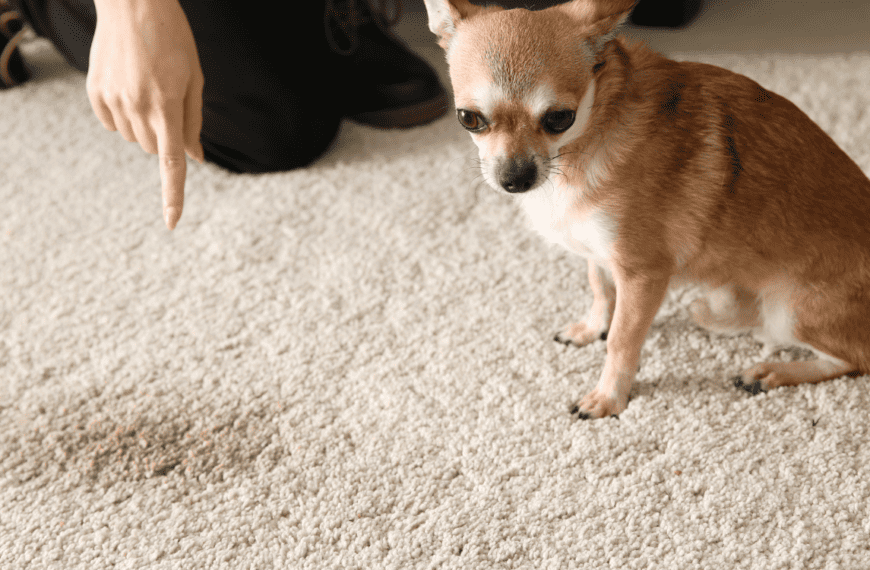Few flooring options offer the rustic charm of unsealed wood, and even fewer come with the same cleaning difficulties. Unfinished hardwood floors are a highlight in the home, but maintaining a flawless look is an ongoing battle that, unfortunately, is all too easy to lose.
The cleaners most of us use to freshen our homes will do more harm than good on an unfinished wood floor. But even with a delicate surface like this, there’s always a solution to freshen the flooring while preparing it for future abuse. It just takes a fresh perspective. To help you maximize the warmth and comfort of your space, I’ll detail how to clean unsealed wood floors safely, quickly, and effectively.
Do I Have Unsealed Wood Floors?
Identifying unsealed wood is essential if you hope for a crisp, enduring sheen after cleaning. A mirror-like shine is a dead giveaway that you have a finished floor. If you run your hand over the boards, a seal will be smooth, while it likely has a penetrating finish if you can feel the grain.
Dropping a few drops of water on the wood’s surface will also tell you whether it has a finish. If the water beads on top, it has a seal. Otherwise, the water will soak in to indicate you have unfinished wood floors.
Why Should I Take Care of Unsealed Wood Floors?
Unsealed hardwood floors can often seem impractical. But there’s much to appreciate in their authentic rustic aesthetic. Even without a shiny protective layer, unfinished flooring captures anyone’s interest. And while it may seem impossible, they can also have some surprising maintenance benefits.
No finished or unfinished wood flooring is immune to harm, especially if you neglect them for too long. Dents, scratches, and, even worse, dreaded black urine stains from pets are always possible without regular care. In sealed flooring, these issues may be labor-intensive to repair. But you can skip several steps when managing the same damage on an unsealed wooden floor.
Still, frequent maintenance is generally more critical with unsealed floors. Unfinished wood floors are more susceptible to stains, impacts, and abrasive damage than those with a protective coating.
Stains soak in quickly, and you must treat spills, pet accidents, or other liquids immediately. Unfortunately, unfinished wood can be so delicate that even the typical materials you’d use for cleaning hardwood floors can cause undue staining, warping, and marring.
How To Clean Unsealed Wood Floors
Clean unsealed hardwood floors by sweeping dirt and debris with a soft-bristle broom or vacuum cleaner. Follow up with a DIY or commercial cleaning solution with a damp mop to lightly clean the remaining surface dirt and residue. You can then apply oil, wax, or another finish to your flooring as desired for added protection.
Preparing To Clean Unsealed Floors
Regardless of the solution you select for your unfinished wood floor, every cleaning approach begins with sweeping and/or vacuuming. Removing as much surface dirt and grime as possible first will prevent you from spreading grungy smears around as you apply a cleaner.
Clear the room, moving furniture and other obstructions to allow you to work continuously across the space. Sweep the floor with a soft-bristled broom to prevent damage as you remove dirt and dust. A hardwood-friendly vacuum cleaner can also clean efficiently without scratching or scuffing the surface.
After sweeping, you can further remove dust with a dry microfiber mop. Microfiber generates a charge as it moves, attracting dust and other charged particles for a deeper clean. By itself, a microfiber cloth is effective enough to remove and hold bacteria from surfaces, making for a healthier home.
Cleaning Unsealed Wood Floors
You have a few mild options to clean unfinished wood floors for a fresh luster. The crucial point with any of them is to use only a light amount of cleaner. With its ability to quickly absorb water, unfinished wood is prone to staining, warping, and rot, potentially to the subfloor. Always wring your mop head well until it is only slightly damp to keep moisture on the surface.
White Vinegar and Water
Although vinegar can damage porous surfaces, it’s arguably the most convenient wood floor cleaning solution when used correctly. A neutral cleaner is essential in avoiding leftover residue and preventing damage to your flooring. You can bring down vinegar’s acidity by diluting one cup with about a gallon of warm water for your mopping solution.
After vacuuming your wood floor, mix a vinegar and water cleaning solution. Dip a flat mop or microfiber cloth in the cleaner, wring until it’s slightly damp, and mop the floor. When finished, open windows and set out fans to speed up the dry time.
Lemon and Water
Lemon’s citric acid offers many of the same benefits as vinegar to gently clean unsealed hardwood floors. Squeeze a fresh lemon into a bucket of water. Dip your mop or cloth in the cleaner, and wring well. Clean your unfinished floors with your mop or damp cloth, working with the grain. Air out the room to dry, setting fans as necessary.
Natural Oils
Natural oils like jojoba or boiled linseed oil are practical finishers to an unfinished floor, retaining the grain and character while filling the wood pores to protect against damage. But you can also use them in the cleaning phase. Oils are excellent options to break down gunky residues on an unsealed floor.
Apply your oil directly to your microfiber mop or cloth. Rubbing in the direction of the grain, work the cleaner into your unfinished wood floor. Ensure even and thorough application for a consistent glow. Let the oil sit for 10–15 minutes before going over it again with a dry mop or cloth to polish and remove excess fluid.
Note: An approach that many DIYers take is to make blends of cleaning solutions. For instance, some combine lemon juice with olive oil or jojoba oil with vinegar. Results will vary depending on the cleanliness of your floors, but it’s worth considering if you aren’t getting satisfaction from your current cleaner.
Commercial Products
Pickings are slim if you want to lean on a commercial product for cleaning unfinished wood flooring. Harsh chemical cleaners can quickly wear and discolor the wood. Even popular products like Bona and Murphy’s Oil Soap aren’t recommended for unfinished flooring.
Fortunately, a few commercial cleaning products can take care of your unfinished floors, including:
- Aunt Fannie’s Hardwood Floor Cleaner
- Begley’s Natural Hardwood Floor Cleaner
- Naturally It’s Clean Floor Enzyme Cleaner
Dilute the product, and apply according to the instructions. Before using it across the entire floor, spot-test the cleaner in an inconspicuous area on your hardwood floor.
How To Handle Stubborn Stains
If your usual cleaner for unfinished wood flooring isn’t sufficiently removing stubborn stains, you can try a more aggressive solution like mineral spirits or trisodium phosphate. Proper ventilation and protective gear (e.g., eyewear, rubber gloves) are necessary for more potent options, as the fumes and liquid can damage your lungs, eyes, and skin.
Mineral Spirits
Mineral spirits are petroleum-based solvents that can remove residues and grime. Apply some to a clean cloth, and squeeze out excess liquid. Rub it over the wooden floor, and wipe again with a dry cloth to remove any lingering cleaner.
Trisodium Phosphate
An effective surface prep and degreaser, trisodium phosphate can clean all kinds of challenging blemishes, whether it’s oil on your wooden floors or soot stains on the wall. Mix the powder with water according to the instructions, and rub it on the floor with a damp cloth or sponge. Rinse with another slightly wet cloth, and towel dry the area.
Tips for Cleaning Unsealed Wood Floors
What do you do for those unique cleaning issues that vinegar, lemon, and mineral spirits can’t conquer? I don’t have all the answers, but I can share a few helpful tips and tricks for handling challenges that unsealed wood floors could present:
- Use fine-grit sandpaper to take away tough surface stains and blend shallow scratches
- Use a soft-bristled brush to lift grime without scratching the wood flooring
- Place ice cubes in a plastic bag to freeze gum and other gunk stuck on your wooden floors, making them easy to remove with a plastic scraper
- Fill light surface scratches with correction markers
- Use a soft-bristled, angled broom to dig into floor corners and along baseboard edges
With unfinished wood flooring, pet accidents become exponentially more challenging. Do you need tips on deep cleaning discolored areas and eliminating odors? Check out our article on removing stubborn cat pee stains from wood floors.
Tips for Maintaining Your Unsealed Wood Floor
1. Clean Frequently
You have to clean unsealed wood floors more often than their finished counterparts. Sweep at least 1–2 times weekly. For high-traffic areas, you may need to bump that up to once every day or two.
2. Tackle Spills and Stains Immediately
Floor sealants like polyurethane can usually protect the underlying wood for at least a couple of hours before it causes any apparent damage. But with wood floors, stains soak in the second a liquid makes contact.
Even if you can’t clean the spill immediately, put down a towel or baking soda to soak up the moisture. Preventing the stain from soaking further into the wood is critical, as it will require less sanding when you’re ready to remove the discoloration.
3. Use Furniture Protector
Put felt furniture pads under table, chair, and sofa legs to stop them from scuffing your wood floor. You can also make DIY pads out of fabric, leather, and other materials, adhering custom-cut squares to the legs with super glue. I’ve also had success with the soft side of Velcro strips in place of felt pads.
4. Set Down Floor Mats
Floor mats near entryways will capture dirt and dust migrating from outside. Add a few floor mats to your unsealed floors to reduce the necessary cleaning frequency.
5. Avoid High Heels or Sharp Objects
Stay mindful of what you wear and use on and over your floors. Taking shoes off is a good habit entering the home anyways, but keeping sharp heels and any other potentially damaging footwear off the floor will prevent unsightly dings and scratches. By the same token, keeping your pet’s nails trimmed and healthy will avoid any damage they might dole out.
6. Limit Direct Sunlight
Direct sunlight can fade wood, leaving clear border lines between bleached and unaffected flooring. Stay aware of exposure throughout the day, closing blinds as needed to prevent damage.
7. Monitor Food and Drinks
The house rules need to change when you have unfinished wood floors to protect. Drinks and food need constant monitoring, and you should consider where you keep your pet bowls. If you have unsealed wood floors in a dining area, an area rug under the dining table can protect against spills and scuffs. But be sure to clean under the rug regularly, as spills can still soak through and stain the floor without you realizing it.
Frequently Asked Questions (FAQs)
Should I Seal My Unsealed Wood Floor To Make Cleaning Easier?
Sealing a wood floor makes it easier to clean in several ways. Polyurethane sealers and other varnishes create water-resistant layers that shield wood from moisture intrusion, dirt, impacts, dog and cat nails, and other hazards. The smooth surface makes it easy to wipe down, and you can use more aggressive cleaners for efficient cleaning.
How Do I Make Unfinished Wood Floors Shine?
Polyurethane, wax, and shellac will all add shine to untreated floors to varying degrees. A penetrating oil sealer or wax will be your best bet for the most natural tone, low-gloss finish, and texture. For shinier flooring, opt for shellac or polyurethane.
What Is the Best Cleaner for Unfinished Wood?
Vinegar and water might be the best natural cleaner for an unfinished wood floor. It’s efficient, always on hand, and a decent deodorizer, a quick and simple solution to refresh the room. Always ensure you wring your mop well to keep moisture to a minimum.
Untreated wood floors can lend inimitable appeal when given the proper consideration. By following these cleaning tips, you’ll make the task as rewarding as possible.









